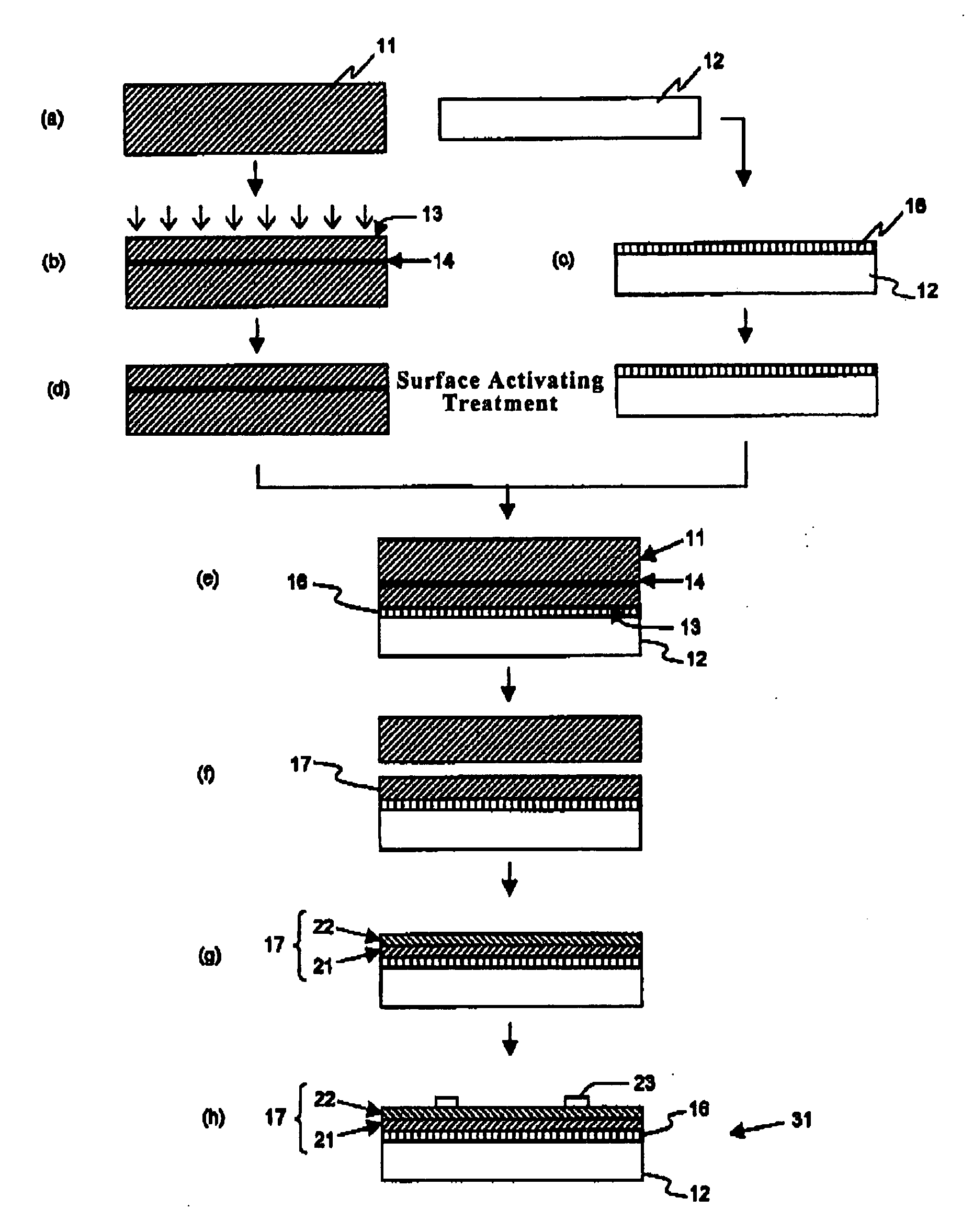Method for producing single crystal silicon solar cell and single crystal silicon solar cell
a technology of solar cells and solar cells, applied in the direction of final product manufacturing, sustainable manufacturing/processing, sustainable buildings, etc., can solve the problems of reducing affecting the efficiency of production, so as to achieve excellent crystallinity and improve conversion efficiency. , the effect of high conversion efficiency
- Summary
- Abstract
- Description
- Claims
- Application Information
AI Technical Summary
Benefits of technology
Problems solved by technology
Method used
Image
Examples
example
[0079]Prepared as a single crystal silicon substrate 11 was a single crystal silicon substrate of a p-type, having a diameter of 200 mm (8 inches), one surface which was mirror-polished, a crystal face (100), and a specific resistance of 15 Ω·cm. Further prepared as a transparent insulator substrate 12 was a quartz glass substrate having a diameter of 200 mm (8 inches) and a thickness of 2.5 mm (stage “a”).
[0080]Next, hydrogen cations were implanted into the single crystal silicon substrate 11 under a condition of an acceleration voltage of 350 keV and a dosage of 1.0×1017 / cm2 (stage “b”). This resulted in a depth of an ion implanted layer 14 at about 3 μm from an ion implanting surface 13.
[0081]Meanwhile, there was formed a coating of tin oxide doped with fluorine at a thickness of about 0.5 μm on one surface of the quartz glass substrate 12 by chemical vapor deposition, thereby providing a transparent electroconductive film 16 (stage “c”). The surface of the transparent electrocon...
PUM
| Property | Measurement | Unit |
|---|---|---|
| Depth | aaaaa | aaaaa |
| Depth | aaaaa | aaaaa |
| Electrical conductor | aaaaa | aaaaa |
Abstract
Description
Claims
Application Information
 Login to View More
Login to View More - R&D
- Intellectual Property
- Life Sciences
- Materials
- Tech Scout
- Unparalleled Data Quality
- Higher Quality Content
- 60% Fewer Hallucinations
Browse by: Latest US Patents, China's latest patents, Technical Efficacy Thesaurus, Application Domain, Technology Topic, Popular Technical Reports.
© 2025 PatSnap. All rights reserved.Legal|Privacy policy|Modern Slavery Act Transparency Statement|Sitemap|About US| Contact US: help@patsnap.com


